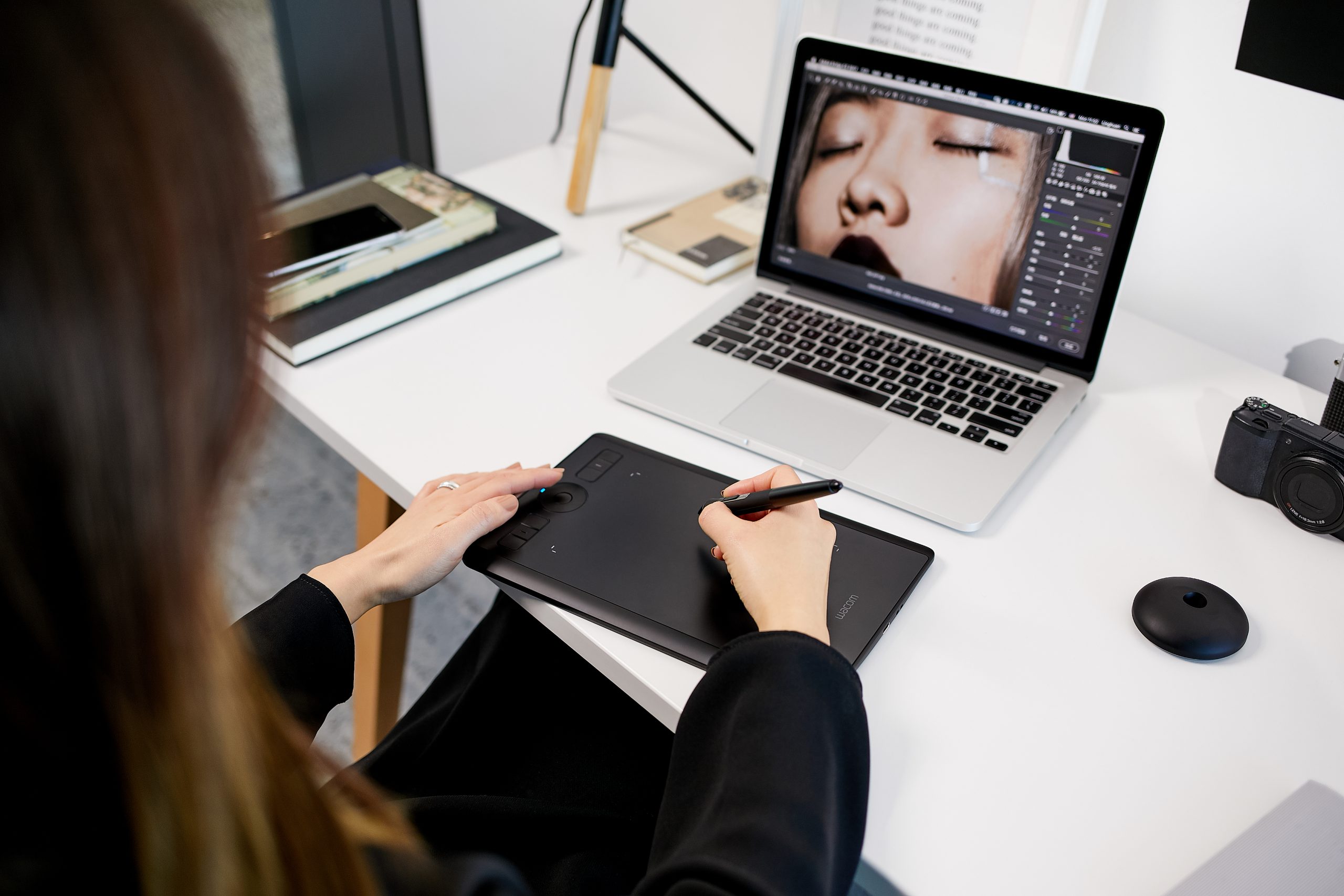Graphic organisers are nothing new. You might know them as concept maps, relationship charts, or mind maps. They’re essential visual thinking tools you can use to help your students learn more effectively and retain that learning for longer.
Wacom pen tablets are the perfect resource for making effective graphic organisers whether you’re face-to-face in the classroom or teaching online. They let you handwrite, edit, highlight, and erase straight onto electronic templates using a comfortable pen rather than an awkward computer mouse.
What is a graphic organiser?
Graphic organisers are usually a one-page visual map for displaying pieces of information to see the connections between them. They can show information structures (like cause and effect) or support planning and goal setting. It’s a visual alternative to long paragraphs and lists.
Graphic organisers can be used to:
- Summarise information
- Record and organise key vocabulary
- Structure writing tasks
- Problem solving and decision making
- Generating ideas and planning
Some graphic organisers are very specific, rigid templates, others are more flexible. You can design them to work with the needs of your learners. Normally, you record information in shorter sentences or bullet points with a range of colours and boxes to highlight the links. This makes them particularly useful for struggling students.
Choosing a graphic organiser template
There are a huge range of templates you can use to organise information visually. Many will be familiar to you already.
Common templates include:
- Hierarchy charts
- Flow charts
- Venn diagrams
- Idea wheel
- Planning chart
- Word web
Whatever you need, you’ll find plenty of templates freely available online. Use your pen tablet to annotate and edit them, with no wasted time retyping.
How to use your Wacom pen tablet as a graphic organiser
Graphic organisers are simple, but you still need to teach your students how to use them effectively. With online live lessons, you’re forced to type awkwardly into boxes whilst trying to talk. It isn’t an effective way to model the process. Alternatively, you can handwrite on paper under a visualiser, but this leaves you the hassle of typing up the notes.
With Wacom, you get the ability to handwrite straight into a graphic organiser and can save an electronic copy for further use. That lets you clearly model the process with your students so they can see how to create their own. It feels more natural than typing into boxes.
By using a pen tablet, you’re creating a visually appealing organiser that you can copy, store, edit, and print easily. They make a great resource to stick in students’ books or display in the classroom. Add them to collaborative online pages for distance learning and use them as handy revision tools.

How to choose your template
How complex is the information you need to present to your students? That will help you decide which type of model will suit you. Think about the relationship between the pieces of information.
Types of organisation include:
- Spider: A single topic with details around it
- Cluster: Ideas arranged around different smaller themes
- Venn: Similarities and differences
- Fishbone: Cause and effect model
- Cyclical: A cycle that keeps moving without a beginning or end
- Continuum: A process with a fixed start and finish
Once you’ve chosen a suitable template for the information, save it as a Word document, PowerPoint, or PDF, or add it to a whiteboard space like Windows Ink Workspace or Wacom’s Bamboo Paper. Wacom pen tablets are compatible with all your favourite programs, making it incredibly flexible to use.
Modelling the process with your students
Show your students how to create their own graphic organisers using an ‘I Do-We Do- You Do’ approach. First, give them a completed organiser to analyse and discuss. Then create one collaboratively. Verbalise your thought process so they can see how it is done. Finally, they can create their own version.
Use a range of colours and highlighters to make clear connections between ideas. Pen tablet writing can be erased and edited easily, letting you respond to the suggestions made by your students. They need to see the emphasis is on the organisation, not on making it look pretty.
Don’t just use words with graphic organisers. Add images and diagrams drawn with your pen tool and insert pictures found online. You can highlight and write directly over text and images to emphasise, edit, and annotate.
Creating graphic organisers in online lessons
It’s easy to capture ideas on a whiteboard in your classroom, but harder when teaching online. Using a pen tablet makes process clear.
When you’re teaching live online lessons, use screen sharing to show your students the graphic organiser and complete it together. You could send them a completed version to study before the lesson begins. After the class, save a copy of your graphic organiser for students to use as a revision tool and revisit in later lessons.
For asynchronous classes, try using free video software like Loom or Microsoft Stream to make a short video of yourself adding information to the graphic organiser template. Talk whilst you write so your video captures your thought process and organisational decisions. Add a blank copy to a collaborative area or email it out for students to use independently.
What are the benefits of using a graphic organiser?
Graphic organisers are flexible. Make them as simple or complex as you like, used independently or collaboratively. You’re not tied down to a specific design, and it’s easy to teach students how to use them. They can apply this approach to their own work improving note taking, revision, and critical thinking skills.
By using visual models you’re supporting dual coding. Information is processed using words and images together which reduces cognitive load. Struggling students find graphic organisers user-friendly with information feeling less overwhelming. You can add sentence starters, picture prompts, and vocabulary banks to help them.
Final thoughts
Using graphic organisers teaches your students to be critical thinkers. It provides a ‘big picture’. They can see specific links and must work out the relationships between items. They need to prioritise information and be strategic about where they place it on the map.
Graphic organisers are not a rigid final product. Think of them as a working document you can add to and edit over time. Wacom’s pen tablets are the perfect tool to use with them.
Learn more about promotions and Wacom Deals here: https://estore.wacom.com/de-DE/







